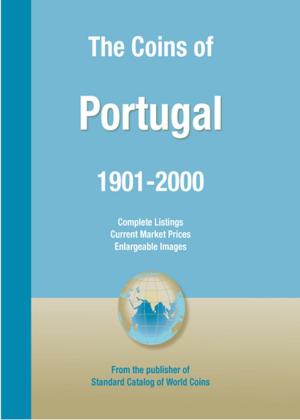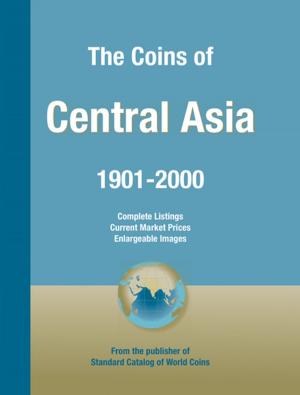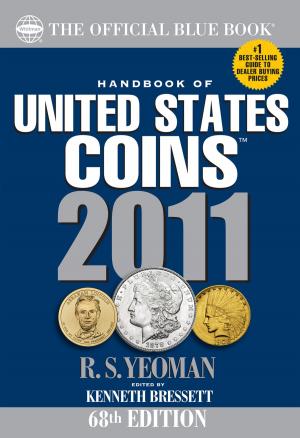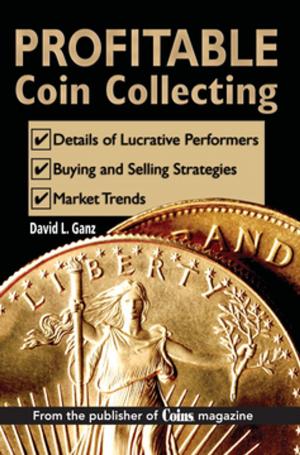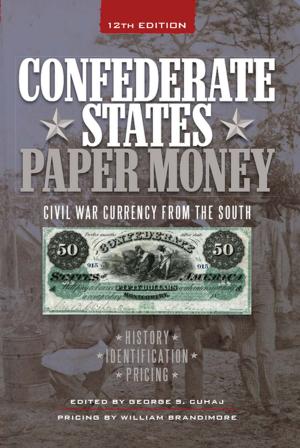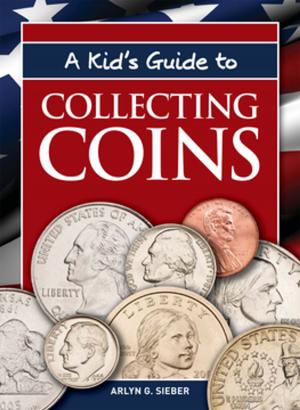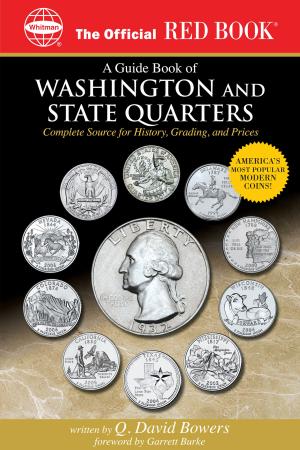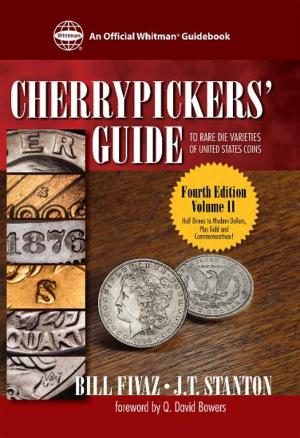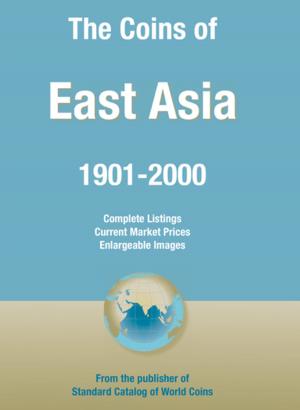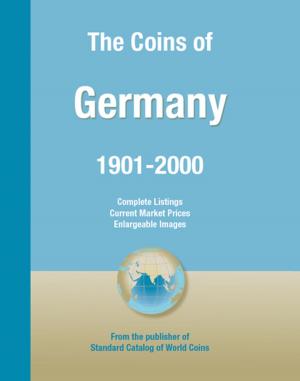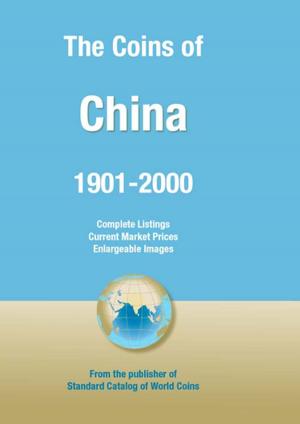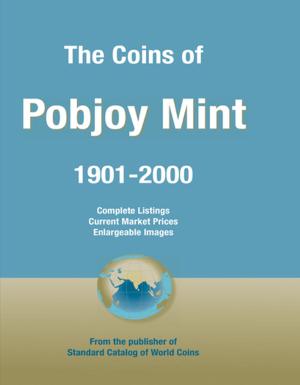| Author: | Daniel J. Goevert | ISBN: | 9781622740512 |
| Publisher: | US Coin Values Advisor | Publication: | June 24, 2014 |
| Imprint: | Language: | English |
| Author: | Daniel J. Goevert |
| ISBN: | 9781622740512 |
| Publisher: | US Coin Values Advisor |
| Publication: | June 24, 2014 |
| Imprint: | |
| Language: | English |
Some people obtain Morgan Dollars without concern for price advancements in the years ahead. These are collectors in the purest sense and are the bedrock foundation of the hobby. However, many of us are hobbyists who try to select "Blue Chip" dates destined to rise strongly in value in the years ahead. We think about the importance of reselling someday, or passing along valuable heirlooms to family. But... what are the "Blue Chip" Morgan Dollars? That's the question many collectors struggle with but never confidently answer because they lack information. Of all the dates available, which ones will rise in value faster? Without the right knowledge, Morgan Dollar buyers may saddle themselves with coins having poor advancement potential. They discover this years later, often when they try to sell. They might have done better had they used a dart board to choose their purchases. There is a solution. The Morgan Dollar Value Trend Report empowers the collector to sort out the blue chippers. The report is the culmination of deeply researched data, full of historical silver dollar prices and analyses. Here's what one reader said about the Morgan Dollar Value Trend Report... "It [the report] is of great value and refer to it often. It was more than I expected. I really enjoy the marketability/interest in the particular coin [Morgan Dollars]. Thanks." Jim McNamara from Las Vegas, NV And another... "The report is easy to read, nicely detailed and highlights value extremely well. I look forward to your next reports." John Lucas from Dallas, TX From now on, base your Morgan purchases on factual evidence of past performance. The most important guiding principle is this: "The coins that have been the most eagerly pursued by the collector base for many years, as evidenced by relatively high percentage price gains over time, will remain the "hot" coins in the years ahead. These are the elusive "Blue Chips" and are coveted by generations of collectors, past, present, and future." What You Get With the Report: -- Clear and concise tables show approximate retail prices at various intervals since 1950 for all Morgans. There is a table for every date. Values are recorded as they were published in the years 1950, 1955, 1960, 1965, 1970, 1975, 1980, 1985, 1990, 1995, 2000, 2002, 2005, 2007, 2009, 2011, and 2013. -- Conditions F-12 to MS-67 are listed, as well as PF-65, where applicable. -- Annualized return rate percentages from certain years in the past to the present are computed to facilitate comparisons. Morgan Dollars with the highest percentages should interest you, if long term value appreciation is your goal! The Collector Index: Not everybody fixates on percentages, so we developed a feature called the Collector Index. The Index is to help the coin collector interpret the data tables faster by assigning a color coded score to every date across the full grade spectrum. A high score indicates the coin has a reputation for attracting keen attention within the numismatic community, translating to good potential for solid future value growth; a low score means to expect a comparatively sluggish performance. The Collector Index score is based on two measures: (1) Percentage Return Rates. Strong value increases consistently over long periods of time, and (2) Current price range. Coins with bigger price tags have a better chance of earning a good Index score compared to other coins.
Some people obtain Morgan Dollars without concern for price advancements in the years ahead. These are collectors in the purest sense and are the bedrock foundation of the hobby. However, many of us are hobbyists who try to select "Blue Chip" dates destined to rise strongly in value in the years ahead. We think about the importance of reselling someday, or passing along valuable heirlooms to family. But... what are the "Blue Chip" Morgan Dollars? That's the question many collectors struggle with but never confidently answer because they lack information. Of all the dates available, which ones will rise in value faster? Without the right knowledge, Morgan Dollar buyers may saddle themselves with coins having poor advancement potential. They discover this years later, often when they try to sell. They might have done better had they used a dart board to choose their purchases. There is a solution. The Morgan Dollar Value Trend Report empowers the collector to sort out the blue chippers. The report is the culmination of deeply researched data, full of historical silver dollar prices and analyses. Here's what one reader said about the Morgan Dollar Value Trend Report... "It [the report] is of great value and refer to it often. It was more than I expected. I really enjoy the marketability/interest in the particular coin [Morgan Dollars]. Thanks." Jim McNamara from Las Vegas, NV And another... "The report is easy to read, nicely detailed and highlights value extremely well. I look forward to your next reports." John Lucas from Dallas, TX From now on, base your Morgan purchases on factual evidence of past performance. The most important guiding principle is this: "The coins that have been the most eagerly pursued by the collector base for many years, as evidenced by relatively high percentage price gains over time, will remain the "hot" coins in the years ahead. These are the elusive "Blue Chips" and are coveted by generations of collectors, past, present, and future." What You Get With the Report: -- Clear and concise tables show approximate retail prices at various intervals since 1950 for all Morgans. There is a table for every date. Values are recorded as they were published in the years 1950, 1955, 1960, 1965, 1970, 1975, 1980, 1985, 1990, 1995, 2000, 2002, 2005, 2007, 2009, 2011, and 2013. -- Conditions F-12 to MS-67 are listed, as well as PF-65, where applicable. -- Annualized return rate percentages from certain years in the past to the present are computed to facilitate comparisons. Morgan Dollars with the highest percentages should interest you, if long term value appreciation is your goal! The Collector Index: Not everybody fixates on percentages, so we developed a feature called the Collector Index. The Index is to help the coin collector interpret the data tables faster by assigning a color coded score to every date across the full grade spectrum. A high score indicates the coin has a reputation for attracting keen attention within the numismatic community, translating to good potential for solid future value growth; a low score means to expect a comparatively sluggish performance. The Collector Index score is based on two measures: (1) Percentage Return Rates. Strong value increases consistently over long periods of time, and (2) Current price range. Coins with bigger price tags have a better chance of earning a good Index score compared to other coins.


